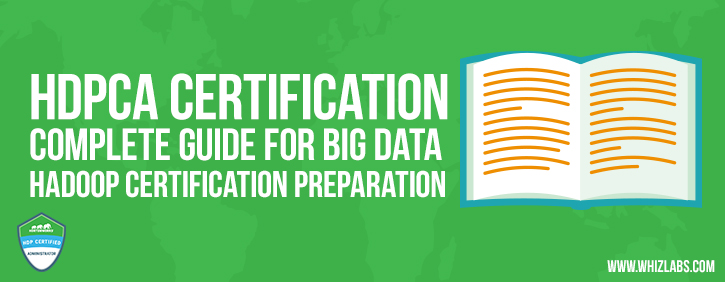Hadoop and Apache Spark both are today’s booming open-source Big data frameworks. Though Hadoop and Spark don’t do the same thing, however, they are inter-related. The need for Hadoop is everywhere for Big data processing. However, Hadoop has a major drawback despite its many important features and benefits for data processing. MapReduce which is the native batch processing engine of Hadoop is not as fast as Spark.
And that’s where Spark takes an edge over Hadoop. In addition to that, most of today’s big data projects demand batch workload as well as real-time data processing. Hadoop’s MapReduce isn’t cut out for it and can process only batch data. Furthermore, when it is time to low latency processing of a large amount of data, MapReduce fails to do that. Hence, we need to run Spark on top of Hadoop. With its hybrid framework and resilient distributed dataset (Spark RDD), data can be stored transparently in-memory while you run Spark.
But does that mean there is always a need of Hadoop to run Spark? Let’s look into technical detail to justify it.
Need of Hadoop to Run Spark
Hadoop and Spark are not mutually exclusive and can work together. Real-time and faster data processing in Hadoop is not possible without Spark. On the other hand, Spark doesn’t have any file system for distributed storage. However, many Big data projects deal with multi-petabytes of data that need to be stored in a distributed storage. Hence, in such a scenario, Hadoop’s distributed file system (HDFS) is used along with its resource manager YARN.
Furthermore, to run Spark in a distributed mode, it is installed on top of Yarn. Then Spark’s advanced analytics applications are used for data processing. Hence, if you run Spark in a distributed mode using HDFS, you can achieve maximum benefit by connecting all projects in the cluster. Hence, HDFS is the main need for Hadoop to run Spark in distributed mode.
Different Ways to Run Spark in Hadoop
There are three ways to deploy and run Spark in the Hadoop cluster.
- Standalone
- Over YARN
- In MapReduce (SIMR)
Standalone Deployment
This is the simplest mode of deployment. In the standalone mode resources are statically allocated on all or subsets of nodes in Hadoop cluster. However, you can run Spark parallel with MapReduce. This is the preferred deployment choice for Hadoop 1.x. In this mode, Spark manages its cluster.
Over YARN Deployment
There is no pre-installation, or admin access is required in this mode of deployment. Hence, it is an easy way of integration between Hadoop and Spark. This is the only cluster manager that ensures security. It is the better choice for a big Hadoop cluster in a production environment.
Spark In MapReduce (SIMR)
In this mode of deployment, there is no need for YARN. Rather Spark jobs can be launched inside MapReduce.
Note: If you are preparing for a Hadoop interview, we recommend you to go through the top Hadoop interview questions and get ready for the interview.
You can Run Spark without Hadoop in Standalone Mode
Spark and Hadoop are better together Hadoop is not essential to run Spark. If you go by Spark documentation, it is mentioned that there is no need for Hadoop if you run Spark in a standalone mode. In this case, you need resource managers like CanN or Mesos only. Moreover, you can run Spark without Hadoop and independently on a Hadoop cluster with Mesos provided you don’t need any library from the Hadoop ecosystem.
Why Enterprises Prefer to Run Spark with Hadoop?
Spark has its ecosystem which consists of –
- Spark core – Foundation for data processing
- Spark SQL – Based on Shark and helps in data extracting, loading and transformation
- Spark streaming – Light API helps in batch processing and streaming of data
- Machine learning library – Helps in machine learning algorithm implementation.
- Graph Analytics (GraphX) – Helps in representing Resilient Distributed Graph
- Spark Cassandra Connector
- Spark R integration
Here is the layout of the Spark components in the ecosystem –
However, there are few challenges to this ecosystem which are still need to be addressed. These mainly deal with complex data types and streaming of those data. Success in these areas requires running Spark with other components of Hadoop ecosystems. Moreover, it can help in better analysis and processing of data for many use case scenarios. Using Spark with Hadoop distribution may be the most compelling reason why enterprises seek to run Spark on top of Hadoop.
Moreover, using Spark with a commercially accredited distribution ensures its market creditability strongly. Databricks is the fundamental data structure of Apache Spark so you can also get a Databricks certification to validate your Apache Spark skills. Other distributed file systems that are not compatible with Spark may create complexity during data processing. Hence, enterprises prefer to restrain run Spark without Hadoop.
How Can You Run Spark without HDFS?
HDFS is just one of the file systems that Spark supports and not the final answer. If you don’t have Hadoop set up in the environment what would you do? Furthermore, Spark is a cluster computing system and not a data storage system. Hence, what all it needs to run data processing is some external source of data storage to store and read data. It could be a local file system on your desktop. Moreover, you don’t need to run HDFS unless you are using any file path in HDFS.
Furthermore, as I told Spark needs an external storage source, it could be a no SQL database like Apache Cassandra or HBase or Amazon’s S3. To run Spark, you just need to install Spark in the same node of Cassandra and use the cluster manager like YARN or MESOS. In this scenario also we can run Spark without Hadoop.
Conclusion
Hence, we concluded at this point that we can run Spark without Hadoop. However, Spark is made to be an effective solution for distributed computing in multi-node mode. Hence, we can achieve the maximum benefit of data processing if we run Spark with HDFS or a similar file system. However, Spark and Hadoop both are open source and maintained by Apache.
Hence they are compatible with each other. Furthermore, setting Spark up with a third-party file system solution can prove to be complicating. Therefore, it is easy to integrate Spark with Hadoop. So, our question – Do you need Hadoop to run Spark? The definite answer is – you can go either way. However, running Spark on top of Hadoop is the best solution due to its compatibility.
[divider /]
Whizlabs Big Data Certification courses – Spark Developer Certification (HDPCD) and HDP Certified Administrator (HDPCA) are based on the Hortonworks Data Platform, a market giant of Big Data platforms. Whizlabs recognizes that interacting with data and increasing its comprehensibility is the need of the hour and hence, we are proud to launch our Big Data Certifications. We have created state-of-the-art content that should aid data developers and administrators to gain a competitive edge over others.
- Top 45 Fresher Java Interview Questions - March 9, 2023
- 25 Free Practice Questions – GCP Certified Professional Cloud Architect - December 3, 2021
- 30 Free Questions – Google Cloud Certified Digital Leader Certification Exam - November 24, 2021
- 4 Types of Google Cloud Support Options for You - November 23, 2021
- APACHE STORM (2.2.0) – A Complete Guide - November 22, 2021
- Data Mining Vs Big Data – Find out the Best Differences - November 18, 2021
- Understanding MapReduce in Hadoop – Know how to get started - November 15, 2021
- What is Data Visualization? - October 22, 2021





Privileged to read this informative blog on Hadoop.Commendable efforts to put on research the hadoop. Please enlighten us with regular updates on hadoop.
Privileged to read this informative blog on Hadoop. Commendable efforts to put on research the data on Hadoop tutorial. Please enlighten us with regular updates on Hadoop course.